The in-season is a time where we return to what is considered ‘normal’ CrossFit training. The in-season constitutes the largest portion of our annual training plan, typically lasting more than half of the training year. This long in-season training period is due to CrossFit’s diverse training style which requires constant attention. Even though there are benefits from a change in scenery, we cannot afford to take much time off from the day-to-day of CrossFit style training if we want to continue to progress in the sport.
Our goal during the early part of in-season training is to continue to add volume as well as reintroduce the movements commonly seen in CrossFit. The latter half of the in-season is dedicated to an increase in exercise intensity that more closely mimics what we would see in competition. This will adequately prepare us for the competition-season, a 5-week, relatively lower volume period, highlighted by weekly, VERY high-intensity tests.
The demands of the competition-season are what drives our training during the in-season. We know that the CrossFit Open will include high rep workouts, consisting of Olympic lifts, CrossFit specific gymnastics movements like toes to bar, and kipping pull-ups, as well as other staple CrossFit exercises like thrusters, burpees, wall balls, and double-unders. In-season training will focus on appropriately preparing us for the CrossFit Open.
For exercise selection, this means we need to start practicing CrossFit exercises again. We should have been exposed to them during our pre-season training period but in low to moderate amounts. During the in-season, these CrossFit staples will comprise the bulk of the exercises we perform.
Looking at planes, this means most of the exercises we do will be performed in the sagittal plane again. To compensate for this restriction to one plane, we utilize multiplanar movements in warm-ups and on ‘easy’ days. The maintenance of multiplanar exercise will help ensure balance within the body, and train neurological qualities like balance, accuracy, and coordination.
Patterns in CrossFit (bends and hinges, squats, presses, and pulls) always remain but with the continued increase in volume and reduction in variation we have to pay extra close attention to the distribution of these exercises. Too much of any one pattern can lead to overuse and overuse can result in stagnated progress or worse, injury.
Contractions, or how we perform our exercises, are going to become much more dynamic. We’ll start to build volume in kipping movements and utilize exercises like wall balls, kettlebell swings, and double-unders much more liberally. We also increase our exposure to the Olympic lifts, training them not in isolation but as a component to a bigger test of fitness. Strength training will also see a shift away from a mindful focus on movement quality to the development of maximal strength. Remember, in CrossFit, all components of fitness are trained with equal emphasis and value. It’s HOW we train those components that changes throughout the year.
When selecting exercises during the pre-season there is special attention paid to using fatigue-resistant exercises. This helps us to focus on the training goals of cardiorespiratory endurance and movement quality. During in-season training, we want some graded exposure to competition-like scenarios which means training for ‘exercise-endurance’. Exercise endurance is a function of local muscular endurance or stamina; “The ability of body systems to process, deliver, store, and utilize energy.” Other factors that make up exercise endurance are technique and movement economy. The in-season is the time to start focusing on this quality of exercise-endurance and we do so with specifically programmed skill progressions.
Skills are the final piece of in-season training that we increase our focus on. Skills are incredibly important in CrossFit. Just as we take time to focus on movement quality during the pre-season, the in-season is where we develop and master skills. Skill mastery means that we won’t see a degradation of form in the presence of fatigue. This focus on skills gives athletes the confidence to compete at their physical limits when presented with the challenge.
The CrossFit Open can be a particularly gruelling test of fitness and it is the responsibility of CrossFit coaches to make sure participants are adequately prepared. This is true for everyone, not just elite competitors. The in-season comprises more than half of our training year and focuses on developing all the qualities that will be in demand during our competition-season.


